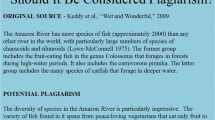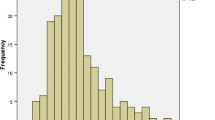Abstract
In the thesis literature review, an engineering graduate student is expected to place original research in the context of previous work by other researchers. However, for some students, particularly those for whom English is a second language, the literature review may be a mixture of original writing and verbatim source text appropriated without quotations. Such problematic use of source material leaves students vulnerable to an accusation of plagiarism, which carries severe consequences. Is such textual appropriation common in engineering master’s writing? Furthermore, what, if anything, can be concluded when two texts have been found to have textual material in common? Do existing definitions of plagiarism provide a sufficient framework for determining if an instance of copying is transgressive or not? In a preliminary attempt to answer these questions, text strings from a random sample of 100 engineering master’s theses from the ProQuest Dissertations and Theses database were searched for appropriated verbatim source text using the Google search engine. The results suggest that textual borrowing may indeed be a common feature of the master’s engineering literature review, raising questions about the ability of graduate students to synthesize the literature. The study also illustrates the difficulties of making a determination of plagiarism based on simple textual similarity. A context-specific approach is recommended when dealing with any instance of apparent copying.



Similar content being viewed by others
References
Australian Vice-Chancellors’ Committee. (1997). Joint NHMRC/AVCC statement and guidelines on research practice. http://www.nhmrc.gov.au/grants/policy/researchprac.htm. Accessed 20 Jan 2010.
Barks, D. (2001). Textual borrowing strategies for graduate-level ESL writers. In D. Belcher & A. Hirvela (Eds.), Linking literacies: Perspectives on L2 reading-writing connections (pp. 246–267). Ann Arbor: University of Michigan Press.
Bianchi, F., & Pazzaglia, R. (2007). Student writing of research articles in a foreign language: Metacognition and corpora. In R. Facchinetti (Ed.), Corpus linguistics 25 years on (pp. 259–287). Amsterdam and New York: Rodopi.
Biber, D., Johansson, S., Leech, G., Conrad, S., & Finegan, E. (1999). Longman grammar of spoken and written English. Harlow, England: Pearson Education Limited.
Boote, D. N., & Beile, P. (2005). Scholars before researchers: On the centrality of the dissertation literature review in research preparation. Educational Researcher, 34(6), 3–15.
Bouville, M. (2008). Plagiarism: Words and ideas. Science and Engineering Ethics, 14(3), 311–322.
Brown, B. S. (1994). The academic ethics of graduate engineering students. Chemical Engineering Education, 28, 242–243, 265.
Brown, B. S. (1996). A comparison of the academic ethics of graduate business, education and engineering students. College Student Journal, 30(3), 294–301.
Campbell, F. C. (2004). Manufacturing processes for advanced composites (p. 96). Oxford: Elsevier.
Carpenter, D. D., Harding, T. S., Finelli, C. J., Montgomery, S. M., & Passow, H. J. (2006). Engineering students’ perceptions of and attitudes towards cheating. Journal of Engineering Education, 95(3), 181–194.
Chandrasoma, R., Thompson, C., & Pennycook, A. (2004). Beyond plagiarism: Transgressive and nontransgressive intertextuality. Journal of Language, Identity and Education, 3(3), 171–193.
Chekola, M., & Shaw, S. (2007). Plagiarism: What it is and how to avoid it. http://www.mnstate.edu/gracyk/expectationsofstudents/plagiarismwarning.htm. 14 Apr 2010.
Clarke, R. (2006). Plagiarism by academics: More complex than it seems. Journal of the Association for Information Systems, 7(2), 91–120.
Crocker, J., & Shaw, P. (2002). Research student and supervisor evaluation of intertextuality practices. Hermes, 28, 39–58.
Dong, Y. R. (1998). Non-native graduate students’ thesis/dissertation writing in science: Self-reports by students and their advisors from two U.S. institutions. English for Specific Purposes, 17(4), 369–390.
Drum, A. (1986). Responding to plagiarism. College Composition and Communication, 37(2), 241–243.
Dylan, B. (1965). Gates of Eden. In Bringing it all back home. Audio recording. New York: Columbia Records.
Flint, A., Clegg, S., & Macdonald, R. (2006). Exploring staff perceptions of student plagiarism. Journal of Further and Higher Education, 30(2), 145–156.
Flowerdew, J., & Li, Y. (2007). Language re-use among Chinese apprentice scientists writing for publication. Applied Linguistics, 28(3), 440–465.
Grose, T. K. (2006). The burden of plagiarism. ASEE Prism, 16, 36–39.
Guha, D. (2003). Broadband design of microstrip antennas: Recent trends and developments. Invited paper. Mechanics, Automatic Control and Robotics, 3(15), 1084.
Hexham, I. (2005). Academic plagiarism defined. http://www.ucalgary.ca/hexham/study/plag.html. 12 Nov 2009.
Hodges, J. C., Whitten, M. E., & Connolly, F. X. (1962). Harbrace college handbook. New York: Harcourt Brace World Inc.
Howard, R. M. (1999). Standing in the shadow of giants: Plagiaristsauthors, collaborators. Stamford, CT: Ablex Pub.
Jones, A. A., & Freeman, T. E. (2003). Imitation, copying, and the use of models: Report writing in an introductory physics course. IEEE Transactions on Professional Communication, 46(3), 168–184.
Karapetian, E. et al. (2002). The principle of correspondence between elastic and piezoelectric problems. Archive of Applied Mechanics, 72 564–587.
Lahlou, M. (1999). . Membrane filtration: tech brief: A National Drinking Water Clearinghouse fact sheet (pp. 2–3). Morgantown, WV: National Drinking Water Learninghouse. http://www.nesc.wvu.edu/pdf/DW/publications/ontap/tech_brief/TB12_Membrane.pdf.
Lenth, R. V. (2006). Java applets for power and sample size. Computer software. http://www.stat.uiowa.edu/rlenth/Power. 4 Apr 2008.
Linder, S. (2007). Ohio University revokes master’s degree: Student found guilty of plagiarism. Ohio University Outlook. http://www.ohio.edu/outlook/06-07/March/457n-067.cfm. Accessed 3 Aug 2009.
Lu, P. (1994). Nonlinear predictive controllers for continuous systems. Journal of Guidance, Control, and Dynamics, 17(3), 554.
McCabe, D. L. (1997). Classroom cheating among natural science and engineering majors. Science and Engineering Ethics, 3(4), 433–445.
McCullough, M., & Holmberg, M. (2005). Using the Google search engine to detect word-for-word plagiarism in master’s theses: A preliminary study. College Student Journal, 39(3), 435–441.
McCutchen, C. W. (1994). Plagiarism: A tale of telltale words. Journal of Information Ethics, 3, 48–50.
Modern Language Association. (2009). MLA handbook for writers of research papers (7th ed.). New York: Modern Language Association of America.
Moed, H. F. (2005). Citation analysis in research evaluation. Dordrecht, The Netherlands: Springer.
National Science Foundation. (2002). Research Misconduct Regulation. 45 CFR 689. http://www.nsf.gov/oig/resmisreg.pdf. Accessed 11 Dec 2009.
Parkhurst, C. (1990). The composition process of science writers. English for Specific Purposes, 9(2), 169–179.
Parry, S. (1998). Disciplinary discourse in doctoral theses. Higher Education, 36(3), 273–299.
Pecorari, D. (2001). Plagiarism and international students: How the English-speaking university responds. In D. Belcher & A. Hirvela (Eds.), Linking literacies: Perspectives on L2 reading-writing connections (pp. 229–245). Ann Arbor: University of Michigan Press.
Pecorari, D. (2003). Good and original: Plagiarism and patchwriting in academic second-language writing. Journal of Second Language Writing, 12(4), 317–345.
Pecorari, D. (2008). Repeated language in academic discourse: The case of biology background statements. Nordic Journal of English Studies, 7(3), 9–33.
Pecorari, D. (2009). Formulaic language in biology: A topic-specific investigation. In M. Charles, D. Pecorari, & S. Hunstan (Eds.), Academic writing: At the interface of corpus and discourse (pp. 91–106). London; New York: Continuum.
Pennycook, A. (1996). Borrowing others’ words: Text, ownership, memory, and plagiarism. TESOL Quarterly, 30(2), 201–230.
Phillips, R. L. (2005). Pricing and revenue optimization (p. 13). Stanford, Calif.: Stanford Business Books.
Roig, M. (1999). When college students’ attempts at paraphrasing become instances of potential plagiarism. Psychological Reports, 84(3 PART 1), 973–982.
Shi, L. (2006). Cultural backgrounds and textual appropriation. Language Awareness, 15(4), 264–282.
Shi, L. (2010). Textual appropriation and citing behaviors of university undergraduates. Applied Linguistics, 31(1), 1–24.
Simpson-Vlach, R., & Ellis, N. C. (2010). An academic formulas list: New methods in phraseology research [advance access publication 14 Apr 2010]. Applied Linguistics, 1–26.
Sorokina, D., Gehrke, J., Warner, S., & Ginsparg, P. (2006). Plagiarism detection in arXiv. In Sixth International Conference on Data Mining, 2006. ICDM ‘06. Hong Kong (pp. 1070–1075).
Turnbull, A. & Pettit, D. (2001). General aviation aircraft reliability study: Section F. Data collection. Contractor Report No. NASA/CR-2001-210647. Hampton, VA: National Aeronautics and Space Administration. http://www.tpub.com/content/nasa2001/NASA-2001-cr210647/.
Western Michigan University (2006). Research misconduct policy and procedures.
Yilmaz, I. (2007). Plagiarism? No, we’re just borrowing better English. Nature, 449(7163), 658.
Acknowledgments
The author gratefully acknowledges the assistance of several colleagues in the preparation of this manuscript. An early draft of this manuscript was presented at the ACRL Science and Technology Section Research Forum at the 2009 American Library Association Annual Conference. At that program, Julia Gelfand provided pointed and astute commentary on my paper that prompted further substantive revisions. Carrie Leatherman, natural science librarian at Dwight B. Waldo Library and Dr. Lewis Pyenson, Dean of the Graduate College at Western Michigan University read and gave supportive feedback on the paper before that presentation. Thanks to the anonymous reviewers for their assistance in fine-tuning this article.
Author information
Authors and Affiliations
Corresponding author
Rights and permissions
About this article
Cite this article
Eckel, E.J. Textual Appropriation in Engineering Master’s Theses: A Preliminary Study. Sci Eng Ethics 17, 469–483 (2011). https://doi.org/10.1007/s11948-010-9214-6
Received:
Accepted:
Published:
Issue Date:
DOI: https://doi.org/10.1007/s11948-010-9214-6




